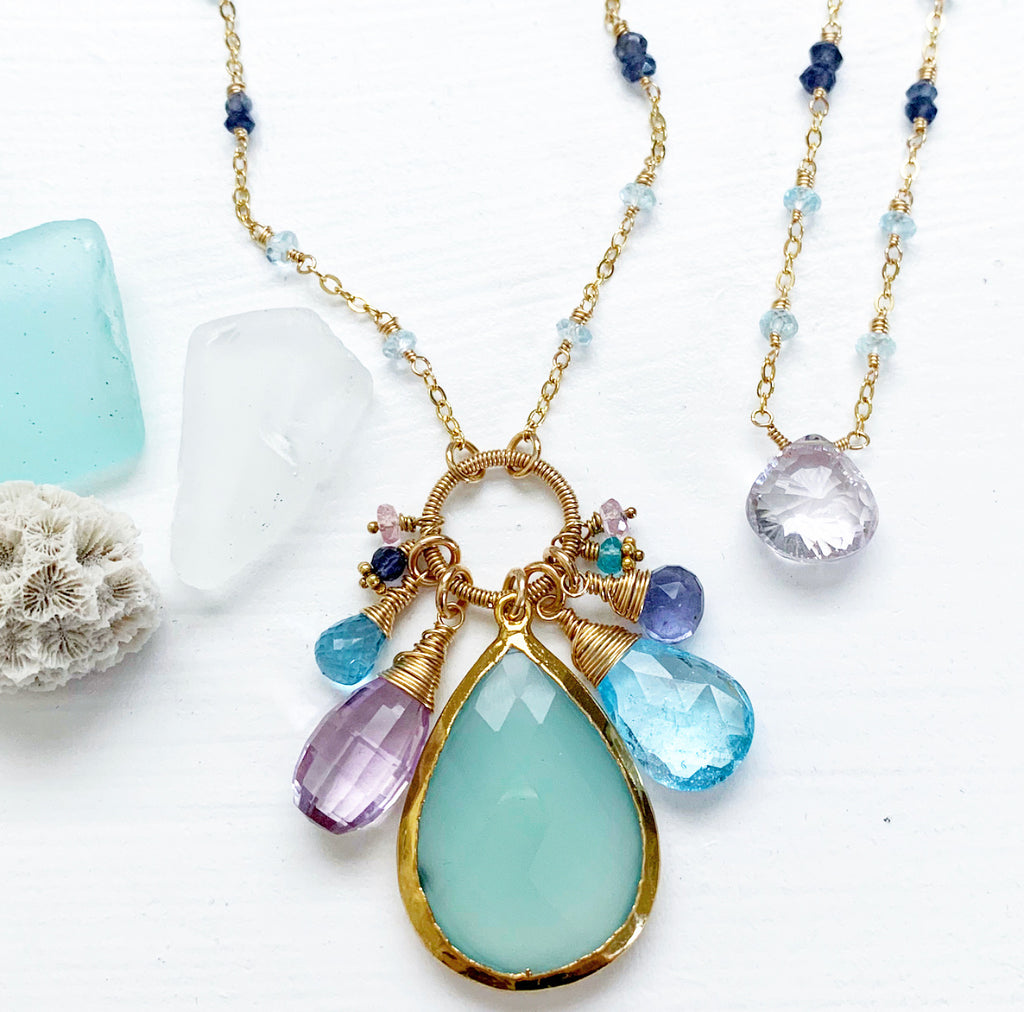
It's that time again for another Gemstone of the Week blog! We love sharing information and interesting facts about our gems, and this blog is especially important to us, as Chalcedony is a stone we adore for its radiant hues and like to use frequently in our designs.
Chalcedony (pronounced cal-sid-ney) can be found in almost all colors including blue, white, grey, yellow, black, brown, orange, green, purple, or sometimes a combination of these colors. Chalcedony belongs to the very large group of quartz minerals, of which in fact, there are so many unofficial names today for varieties of chalcedony, that it's almost impossible to list them all. New varieties are continuously being discovered, most of which are locality-based names, typically dependent on the mining location.
Chalcedony is most often found in sedimentary and volcanic regions, and although some regions are better known than others, high quality chalcedony deposits can be found all over the world. Almost all of the United States is known to produce chalcedony, and it can also be found in Australia, Brazil, China, India, Kazakhstan, Madagascar, Mexico, Mongolia, Namibia, Russia, Sri Lanka, Uruguay, South Africa, Tanzania and Zimbabwe.
Named for the ancient seaport town in Asia, Chalcedon, chalcedony is not just important for the world of jewerly, but also plays a role as material for industrial and scientific use. The ancient civilizations of Egypt, Greece and Italy used varieties of Chalcedony in jewelry, tools and carvings, and the gemstone was believed to instill its holders with certain powers.
Not only was chalcedony important to the ancient people across Africa, Asia and Europe, but it has been found among Native American tribes to be sacred and used in ceremonial gatherings that bring tribes together in order to strengthen and stabilize their bonds. Chalcedony is also believed to help emotional balance, stamina, and endurance as well as generate kindness, charity, generosity and receptivity.
Tell us your favorite use for Chalcedony!